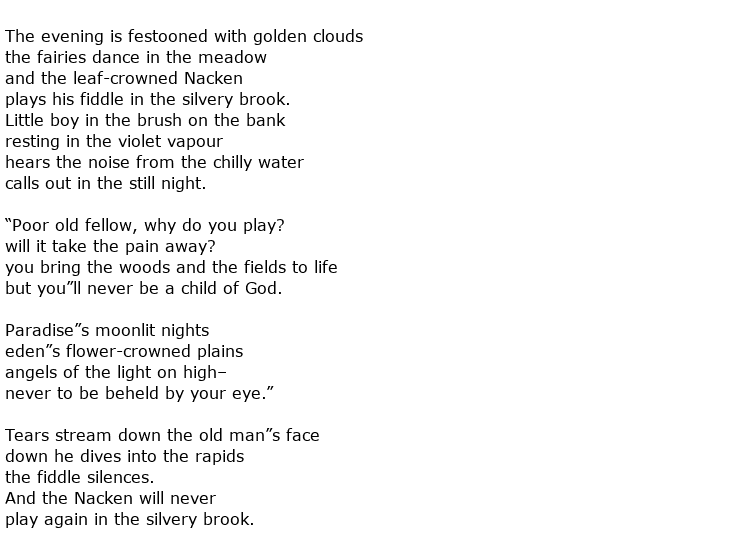 Erik Johan Stagnelius was a Swedish poet who was a member of the Romantic movement in arts and literature, and also a playwright.
Erik Johan Stagnelius was a Swedish poet who was a member of the Romantic movement in arts and literature, and also a playwright.
He was born on the 14th October 1793 in Gärdslösa, a town on the island of Öland. His family background was of a religious nature, his father being a minister who eventually rose to the rank of bishop, and the boy’s spiritual thinking was, understandably in the circumstances, fostered from a young age. Erik was a bright boy and already showing a budding talent for writing when still very young. He did well at school and went on to study at the ancient Uppsala University. He graduated from here in 1814 with a Bachelor”s degree.
Well-educated and talented with a pen he may have been but he was not the most attractive of men. His appearance belied his inner poetic soul, as evidenced by this quote from a female acquaintance:

Many said he was an odd looking fellow and he certainly displayed a gloomy disposition for much of the time. Unsurprisingly he lived alone and, with no other distractions, put down his thoughts in verse whenever he felt the urge. Quite naturally he longed for recognition in the literary world but, sadly, any acclaim coming to him did not appear until after his early death at the age of only 29.
Stagnelius lived at a time when Swedish poets, such as Erik Gustaf Geijer, Per Daniel Amadeus Atterbom and Esaias Tegné were producing great work. The work that first brought him some attention was Wladimir den store (Vladimir the Great), written in 1817 and he followed this up with a romantic piece called Blenda. He wrote touching sonnets which have been described as being amongst

He wrote at least three plays including Martyrerna (The Martyrs) in 1821 and then Bacchanterna (The Bacchantes) was produced the following year. Before this he had produced a number of mystical lyrics under the title Liljor i Saron (Lilies in Sharon (1820). Had he not suffered greatly with his health there is little doubt that his body of work would have been more substantial. Some literary scholars have even compared him to Percy Bysshe Shelley and many of his poems were translated into English. Sadly, so many of his manuscripts were found, unpublished, in a sack on the floor of his apartment, soon after his death. Many were read and appreciated for their mystical and spiritual qualities.
Here is a charming example of his craft. It is a whimsical tale of a mystical water beast called the Nacken, and that is the title of the poem:

Doubts surround the causes of his chronic physical condition. The unkind would suggest that an over indulgence in alcohol was his downfall while a more scientific theory was that Stagnelius suffered from an autosomal dominant congenital disorder known as Noonan Syndrome. Whatever it was, he lived in constant pain and imbibed large quantities of opium in an attempt to alleviate his suffering.
Erik Johan Stagnelius died alone in Stockholm on the 3rd April 1823, aged 29. As in life, where he had very few friends and none of them female, there was virtually no one to see him off.

